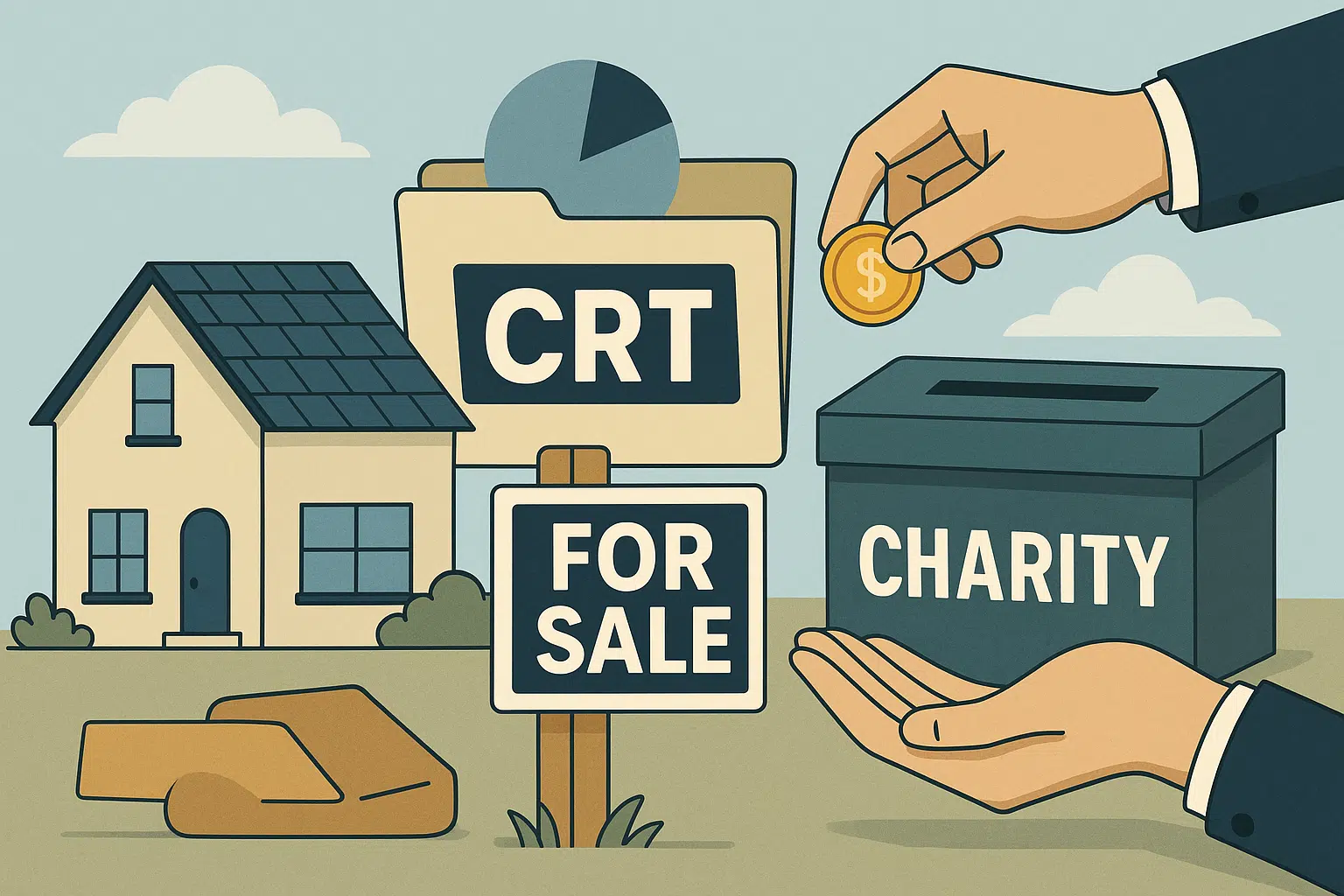If you’ve owned real estate for a long time, there’s a good chance it’s appreciated significantly. That’s great for your net worth, but not so great when it comes time to sell. Capital gains taxes can hit hard. Fortunately, a Charitable Remainder Trust (CRT) offers a way to turn property into income for yourself and a lasting gift for a cause you care about — all while reducing your tax bill.
Why Real Estate Creates a Planning Challenge
Let’s say you bought a property years ago for $200,000, and now it’s worth $1 million. If you sell it outright, you may owe capital gains taxes on the $800,000 gain. That could mean hundreds of thousands of dollars in taxes, depending on your state and federal bracket.
That’s where a CRT can help. Instead of selling the property yourself, you transfer it into a trust. The trust sells the property, pays no capital gains tax, and invests the proceeds to pay you income. Whatever remains at the end of the trust term goes to charity.
How It Works Step-by-Step
1. You transfer the property to a CRT.
Once inside the trust, the property no longer belongs to you personally. The transfer is irrevocable, which means it cannot be undone — so you have to be sure.
2. The CRT sells the property.
Because the trust is tax-exempt, it can sell the property without triggering capital gains taxes. This allows the full sale value to be invested.
3. The CRT pays you income.
You’ll receive annual income for life or for a set number of years. This can be a fixed dollar amount (CRAT) or a percentage of the trust’s value recalculated annually (CRUT).
4. At the end of the trust term, the remainder goes to charity.
The charity you choose receives whatever is left in the trust after the income period ends.
The Tax Benefits
Avoid Capital Gains Tax:
The trust pays no tax when it sells the property, meaning more money is available to invest and generate income.
Receive a Charitable Deduction:
You’ll get a partial income tax deduction in the year you fund the trust, based on the present value of the charitable remainder.
Reduce Estate Taxes:
By removing the property from your estate, a CRT can help reduce the size of your taxable estate if that’s a concern.
What Types of Property Can Be Donated?
Not all real estate is a good candidate, but many types can work well:
-
A rental property with strong appreciation
-
A vacation home you no longer use
-
A commercial building you’re ready to offload
-
Raw land that’s become valuable
It’s important that the property is debt-free. If the property has a mortgage, it can create complications that may disqualify the trust from tax exemption.
When Real Estate and CRTs Make Sense
This strategy is especially useful when:
-
You want to sell a property but avoid a large tax hit
-
You don’t need the full proceeds immediately
-
You’d like to diversify your investments
-
You want to create a stream of income for retirement
-
You care about making a significant charitable impact
It’s also a powerful solution for aging property owners who no longer want to manage real estate but want to preserve value for income and giving.
Common Pitfalls to Avoid
Don’t wait too long.
If the property is already under contract or too close to sale, the IRS may treat it as a sale by you, not the trust. Always talk to your advisor before starting the process.
Avoid mortgaged property.
Donating real estate with debt attached can cause the entire trust to lose tax-exempt status.
Pick your trustee carefully.
Your trustee will handle the sale, investment, and administration. This can be a professional fiduciary or a trusted advisor.
Be realistic about valuation.
The tax deduction you receive depends on the appraised value, not your asking price. Use a qualified appraiser familiar with IRS standards.
Combining with Other Strategies
You can also name a Donor Advised Fund or Family Foundation as the final charitable recipient. This gives your family flexibility in directing future grants after the CRT ends, while still unlocking the tax benefits now.
Final Thoughts
If you’re holding highly appreciated real estate, a Charitable Remainder Trust can offer a way out of the tax trap — and into a more purposeful plan. You’ll receive income, avoid a hefty capital gains bill, and fund a cause you care about.
This isn’t a DIY project. But with the right guidance, you can turn bricks and mortar into something much more lasting.
Key Takeaways
-
A CRT allows you to donate appreciated real estate, avoid capital gains taxes, and receive lifetime income.
-
You get a charitable tax deduction in the year you fund the trust.
-
The property must be debt-free and transferred before a sale is negotiated.
-
CRTs are ideal for people looking to exit real estate ownership, generate income, and give back.
-
Professional setup and administration are required, but the benefits can be significant.
If you have feedback, questions, or ideas for future articles or Information Hubs, please contact us. Your insights help us create valuable content.


